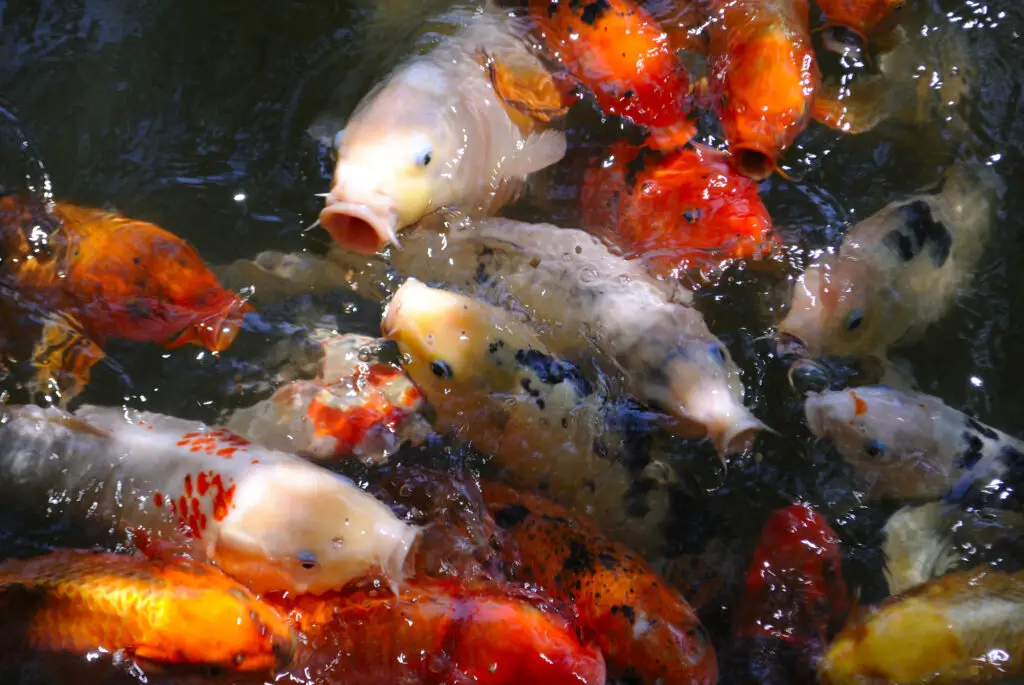
Due to evolution and selective breeding, koi carp, relatives of the sturdy common carp (Cyprinus carpio), are highly durable by nature. However, koi fish often act in strange ways, including a performance called “flashing.” That said, what is flashing, and what is the reason behind it?
When koi flip on their side and swim quickly and unpredictably, it is called “flashing.” Overall, koi flash due to some form of irritation. Irritation can be caused by various factors, including poor water quality, parasites and illness, severe rain, and overexposure to sunlight.
However, several more factors may cause what may irritate your koi. Furthermore, constant flashing is when Koi owners should act. With that in mind, let’s take a closer look at the reasons behind their “flashing” behavior and how to address it.
Pro Tip: If you’re tired of wasting money and making costly mistakes on the koi-keeping hobby or are thinking about buying koi fish but don’t know where to start, I strongly suggest you check out this ebook. I recently read this ebook, and it contains SO much useful information, such as:
- 3 proven steps to identify koi fish diseases
- WARNING: 3 things you should NEVER do when it comes to caring for koi
- When to seek professional help when it comes to looking after your koi
Reasons Behind Koi Flashing
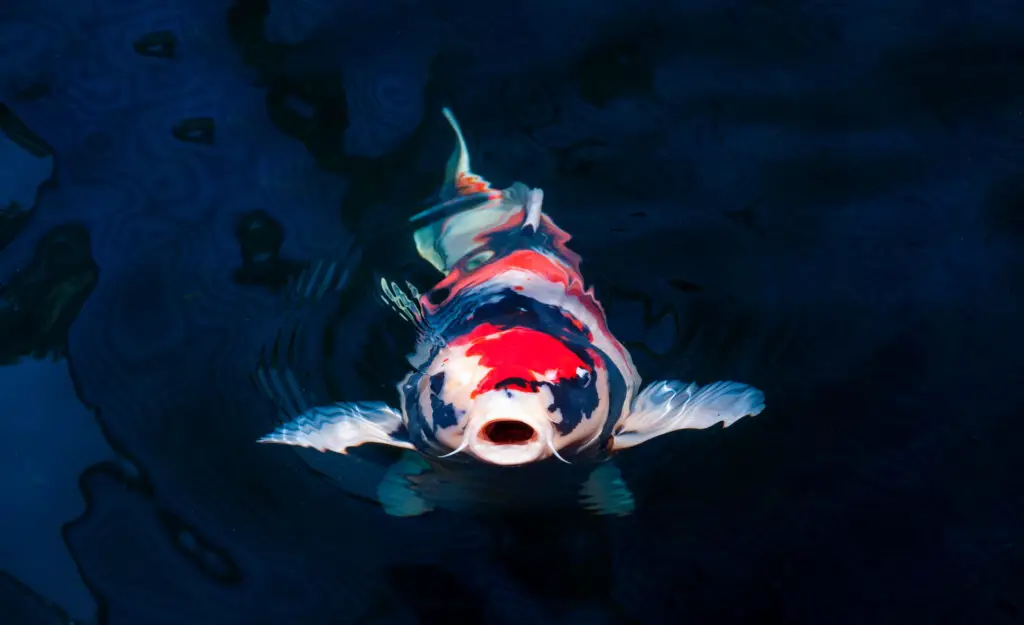
When the fish flips sideways, and the sun reflects off the scales, the word “flash” possibly originated from the dazzling flash of light commonly seen off their scales. Even though koi are members of the Cyprinus carpio family, they are susceptible to environmental stresses and irritants, just like any other creature.
The most prevalent symptom is flashing, which is characterized by the fish leaping and rushing about the pond, rubbing their scales against rocks and the pond’s margins, and swimming on their sides.
These abnormal behaviors are frequently typical symptoms that something isn’t quite right in your pond, and you should start inspecting your pond and koi right away! In addition, flashing behaviors might occur in new fish as they adjust to their new surroundings.
They’ll probably be agitated for a while during their adjusting phase, but in this case, flashing and other strange behaviors should only last a couple of days.
Suppose flashing occurs regularly and lasts for more than a few days; then, it might indicate health problems, skin irritation, and underlying problems caused by disease or poor water quality.
On the other hand, if only one or two fish are flashing and it isn’t happening regularly, it might just be something they do! Some fish, for example, may flash, dash, and leap about after feeding simply because that is their personality.
Nevertheless, if there are several fish, especially if they make up most of the pond, an extensive disease is likely to spread. In addition, the water quality may be poor, and there may be too much direct sunlight, and so on. That said, let’s look into further details behind their behavior when flashing occurs.
Transportation Stress
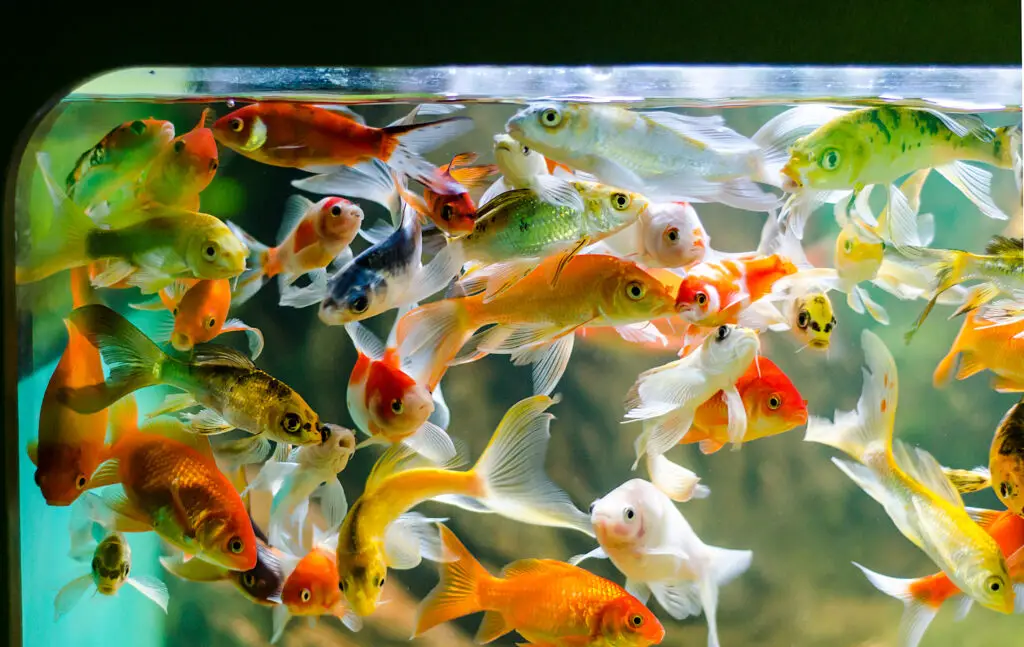
Most koi will be exported at some time in their lives, which may be a traumatic experience. While fish recover quickly from transport stresses, once they reach your pond or holding tank, they will begin to show signs of stress.
The most typical indication of shipping stress is flashing. When we release a bag of Koi from Hazorea Aquatics into our holding tanks, nearly every fish in the bag darts around the tank at breakneck speed. It’s not uncommon for koi to behave similarly when they go from a holding tank to your pond or tank.
The good news is that this is nearly always a one-time occurrence. Koi are tough and resilient fish that recover fast from shipping stress. So the flashing should stop about 2-3 minutes after you release it.
Having Poor Water Quality
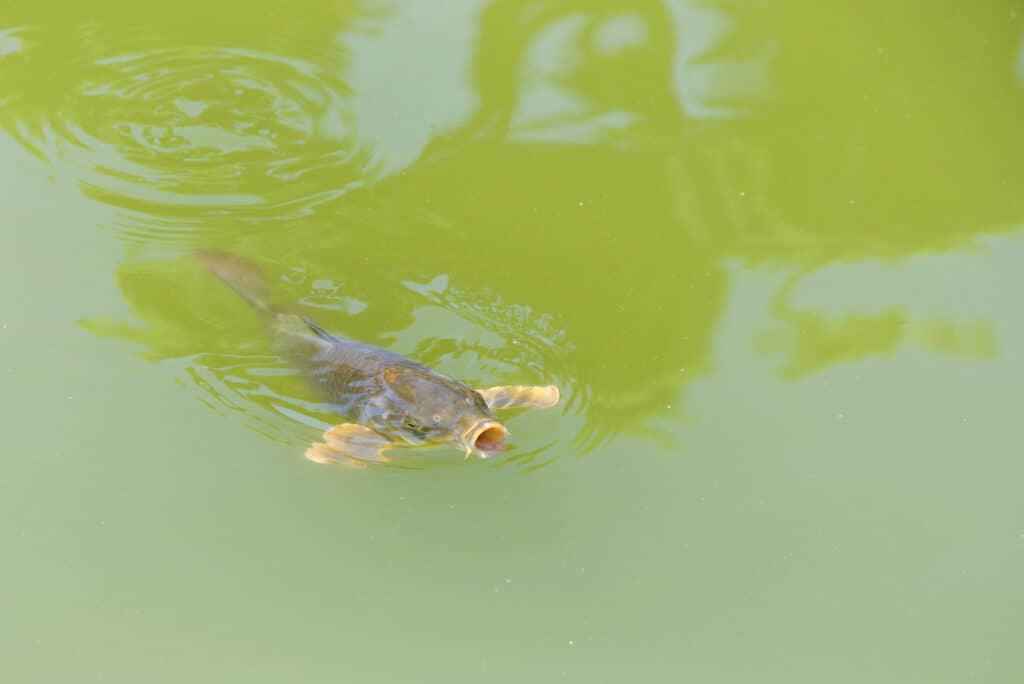
Jumping and flashing behavior might indicate something amiss with your koi pond (or tank). However, because fish can not speak, it might be difficult to distinguish between joyful and distressed leaps.
Fortunately, a testing kit should always be nearby, and utilizing it frequently is the only sure way to determine your water quality.
If you believe your fish are in trouble, conduct a test immediately. If any factors, such as pH or ammonia levels, are out of range, you should respond as quickly as possible to help your fish.
If you keep your koi in a pond, this may be one of the less optimal environments to care for because there are so many external variables outside your control.
One of your fish may have died recently, and you cannot see the body, or some plants may have begun to rot, but you cannot see them due to the flowers in your garden.
These are all common occurrences, but testing your water regularly is the only way to be aware of them and the need to intervene. Please also keep in mind that the water temperature is appropriate and adequate shade for your fish to hide.
Even water temperature (ideal for koi is between 59 and 77° F) is a concern, as water at 77° F may store eight parts per million of dissolved oxygen – over 80° F, this lowers significantly to 6 parts per million, as the solubility of oxygen gas diminishes as temperature increases.
Not only does this warm, anoxic water provide ideal conditions for germs and parasites to thrive, but water with less than six ppm of dissolved oxygen is considered stressful and hazardous to fish, with seven ppm or higher preferred.
More On Oxygen Deficiency
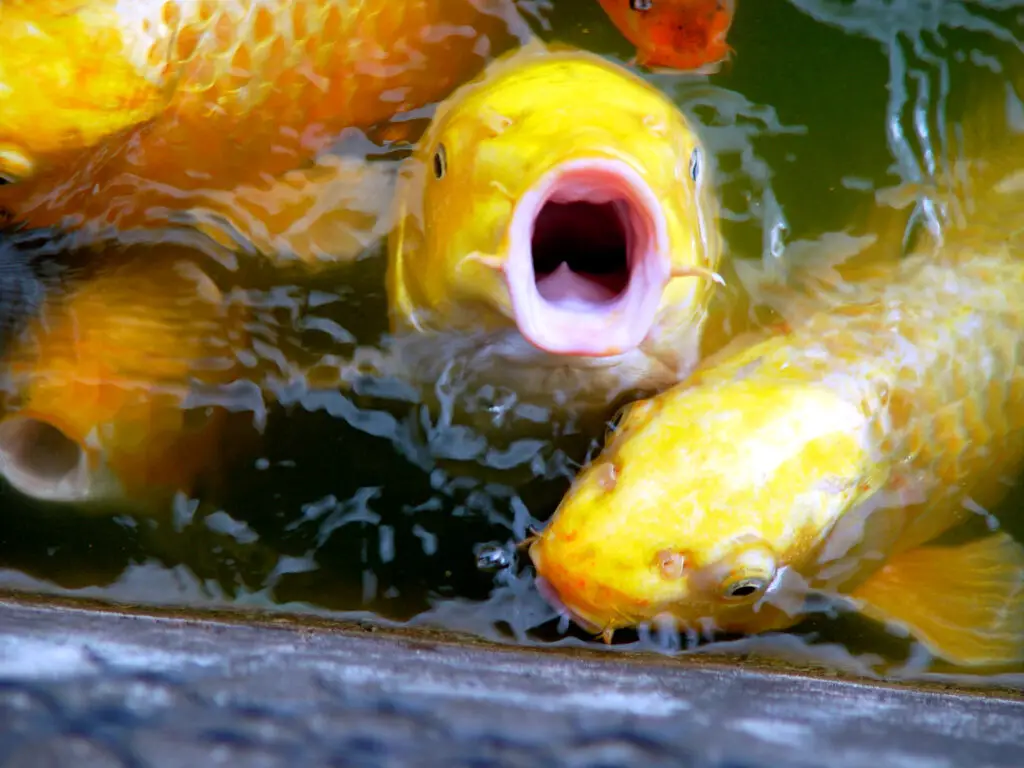
Ponds may experience a lack of oxygen from time to time since such setups are incredibly unique because of the lack of a water stream. If this is happening in your koi pond, you should be able to rule it out quickly since your fish will be gasping for oxygen at the surface.
In such circumstances, they cannot breathe inside their aqueous habitat; thus, they try all in their ability to escape.
Live plants are a beautiful and effective method to increase oxygen levels in a pond, so make sure you have lots of them. Furthermore, they will provide a haven for your fish anytime they are scared or threatened.
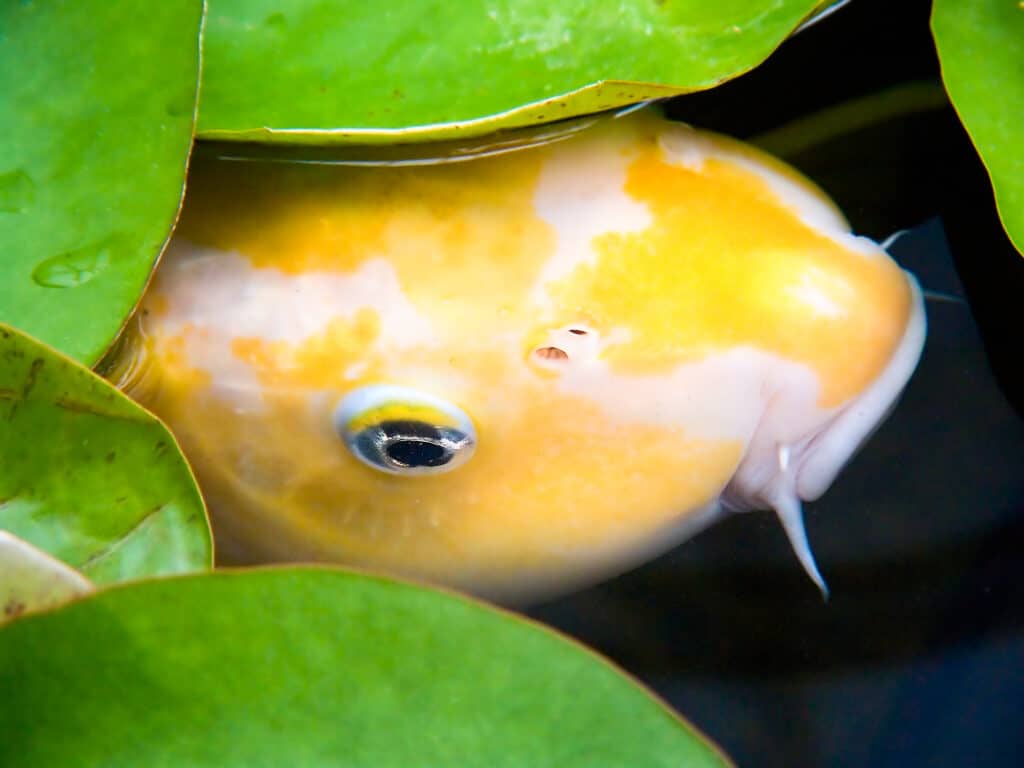
For example, when the sun is too bright, investing in a simple and inexpensive air stone or another type of aeration device would undoubtedly increase your water’s capacity to provide excellent breathing conditions.
Illness And Parasites
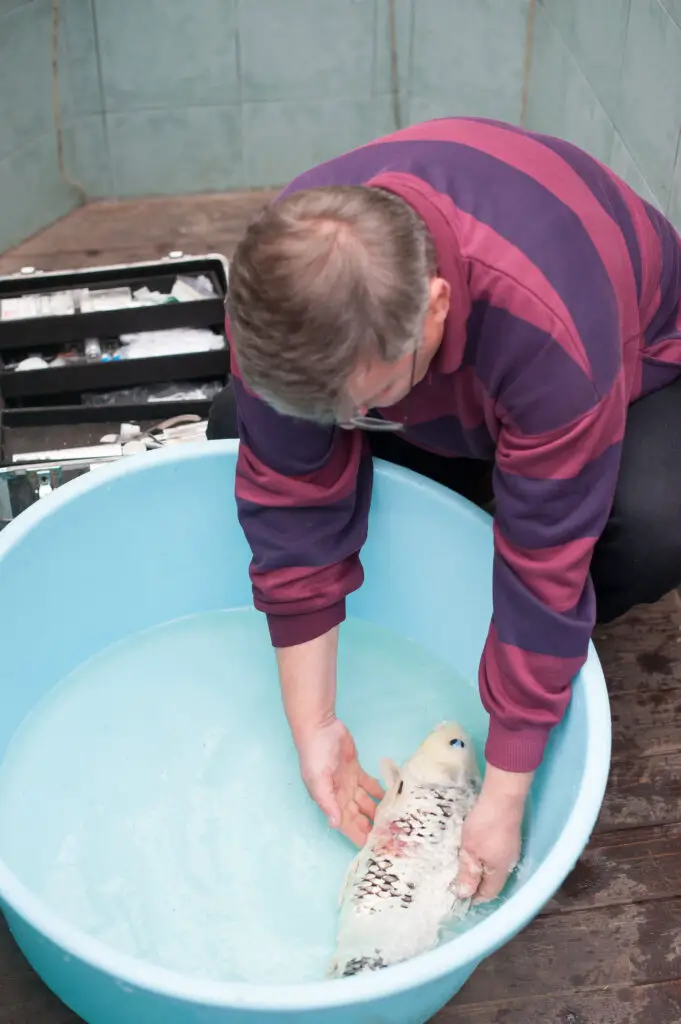
As koi strive to reduce their discomfort and agony, parasitic, fungal, bacterial, and viral illnesses frequently result in flashing behavior.
For example, if not appropriately treated, gill and skin flukes, ich, and koi other viruses cause itching, gill and scale irritation, discomfort, possible fin rot, scale breaking off, and even fatality; flashing is a possible symptom of this cause.
If these diseases are not treated swiftly, they can not only cause fish mortality but can also spread to other streams and affect wild fish.
Many studies over the last decade, for example, have discovered that the koi virus’s can spread to common wild carp in neighboring rivers, making it critical that sick koi be confined and appropriately treated as soon as possible.
A Complete Water Change Without Dechlorination
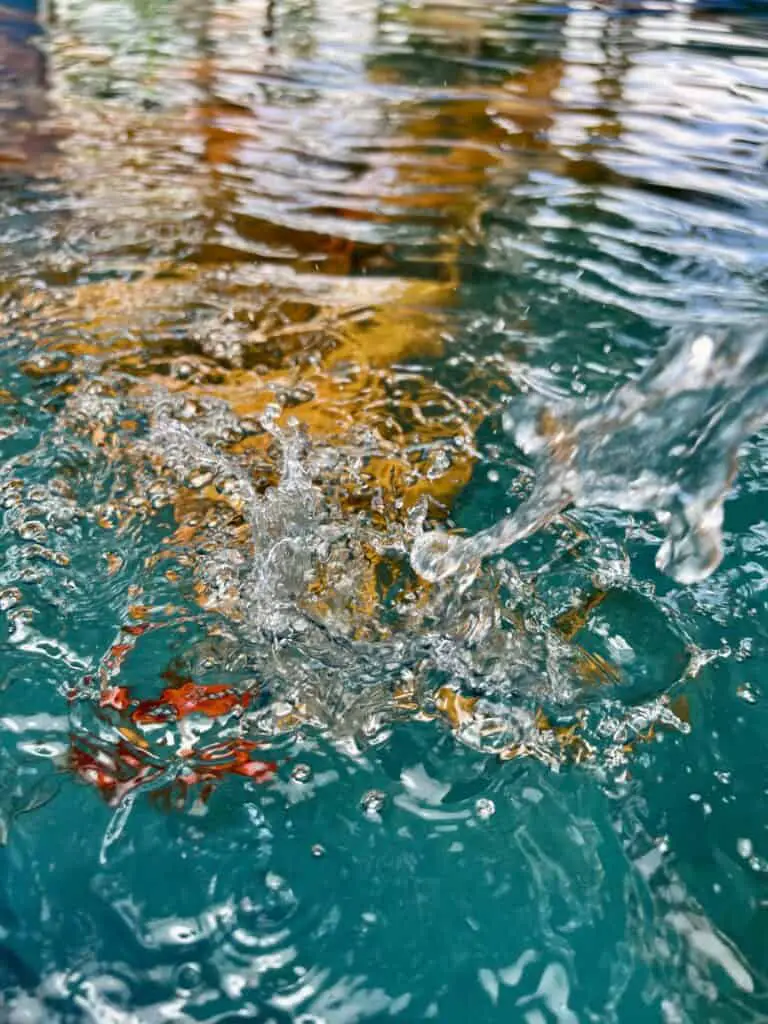
Water changes should preferably be done in modest amounts often – 5 to 10% of the water should be changed daily, or 15 to 25% if done monthly. The greater the water change, the more likely your koi may be shocked.
It is specifically true if the water is not adequately dechlorinated before being introduced to your pond. Furthermore, the water change will stress your fish. Still, any chlorine present can injure them and produce chemical burns, causing flashing behavior.
The Effects Of Chlorine Due To A Water Change
Even while chlorine is entirely safe for humans in regular doses, it may be lethal to fish. So if you did your usual partial water changes but neglected to dechlorinate the freshwater you poured in their pond or tank, this might cause their flashing.
Every time tap water is introduced into a fish pond, you must treat it with an appropriate de-chlorinator, even in the tiniest amounts. Water will become a lethal threat to your fish if you neglect this step. If not addressed quickly, chlorine can inflict chemical burns and kill your fish.
A Heavy Downpour Of Rain
Due to the nature of the water cycle, heavy rainfall modifies pH and is also relatively rich in nutrients. Therefore, a significant volume of water dropping into your pond may quickly change the water temperature, causing your fish to get agitated and their resistance to sickness to deteriorate.
Koi may begin flashing owing to stress and pain due to the pH shift, nutritional excess, and possibly temperature variation.
Possible Overexposure To Sun And Sunburn
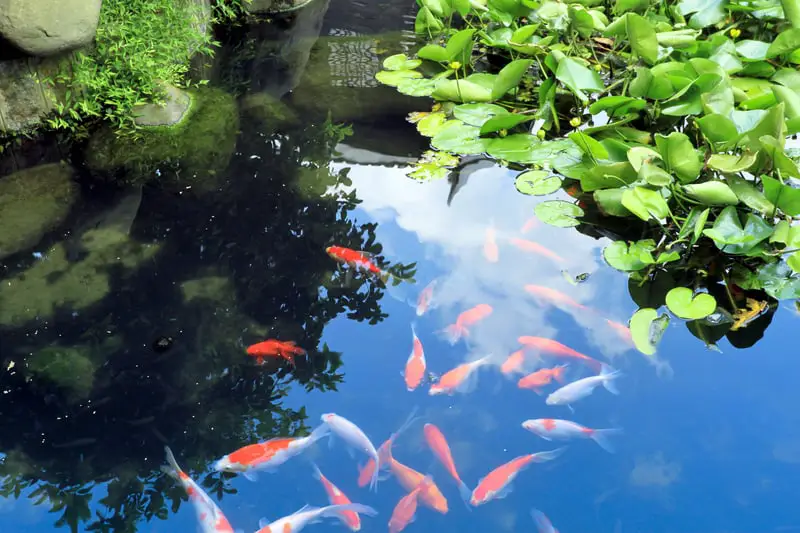
Koi, especially those with lighter colors, are precisely like humans when it comes to sunburn. If your koi is sunburned, you’ll notice a subtle pinkish tint that grows deeper and hotter as the sunburn progresses. If it irritates their skin, they may react by flashing and hopping around in an attempt to cool the area and comfort it.
Insufficient Nutrition And A Poor Diet
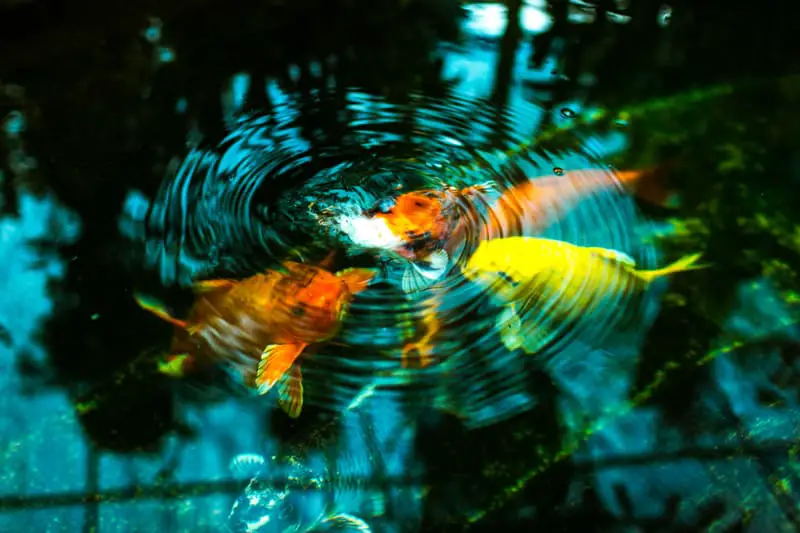
Poor food can promote flashing behavior in koi, such as sticking at the pond’s surface and floating on their side. Therefore, Spirulina, wheat germ, citrus fruits, raspberries, shelled peas, bloodworms, and a range of other additional goodies should all be offered to all koi.
Furthermore, well-balanced pellets are created particularly for koi, whether store-bought or handmade.
How To Treat Parasites In Koi
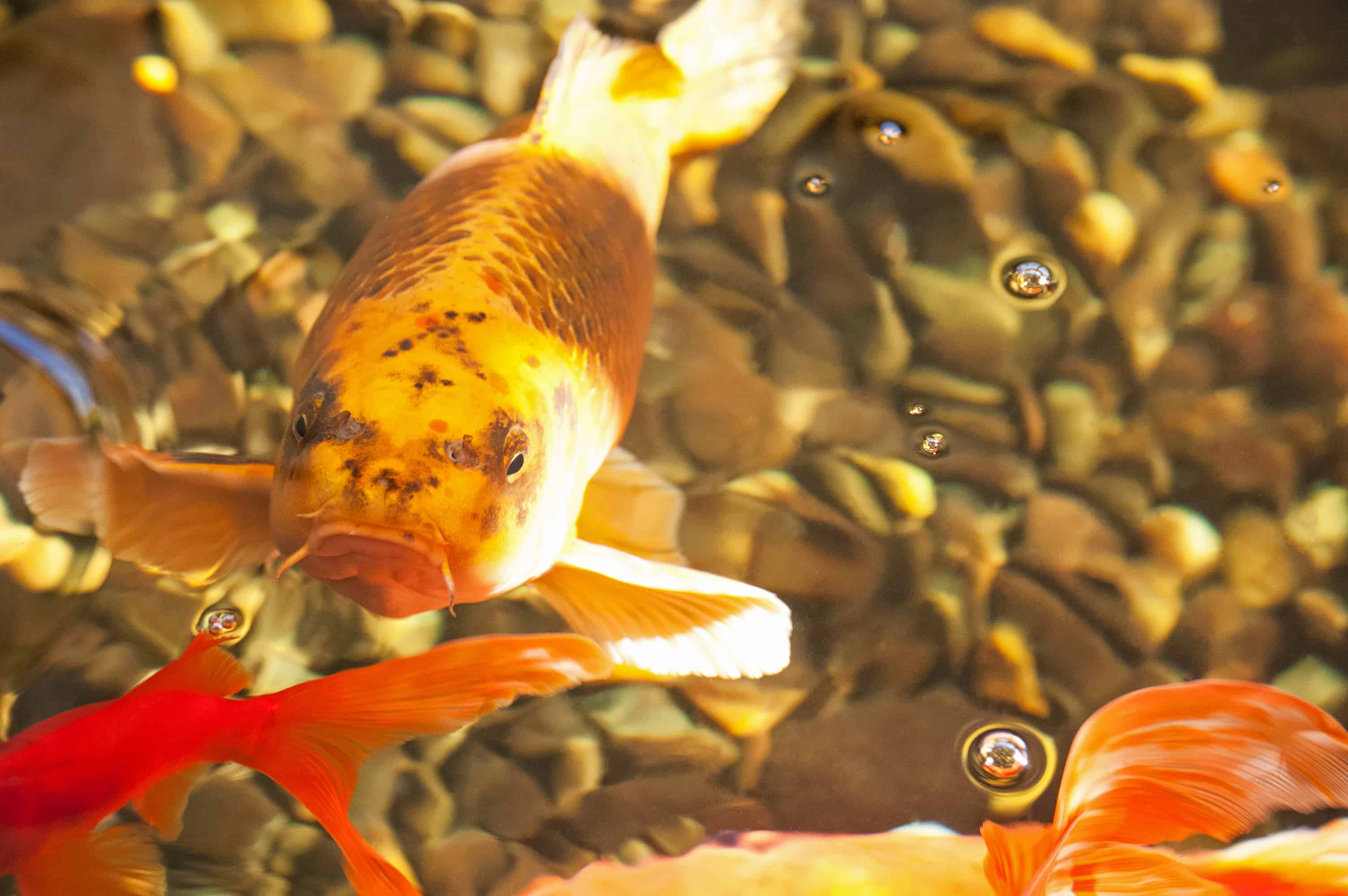
In your pond, parasites can be a significant source of concern. They may swiftly spread throughout your system, wreaking havoc. However, recognizing the signs and symptoms can help you save a lot of sorrow and inconvenience.
I’ve compiled a list of two typical pond parasites to be aware of and what the best treatments would be to ensure your koi would return to their usual happy self in no time.
White Spot
(image)
The White Spot, the infamous ich, is the most prevalent parasite in fish. If left to its own strategies, it would swiftly cover a fish and spread across the pond. Though the prominent white spots are the parasite already evolving in its life cycle, all aquarists have seen this covering fish.
You may initially observe flashing caused by fish rubbing against items to relax their scales before noticing salt-like patches on the fish. Some fish are sluggish and have their fins clamped close to their bodies.
White spot is treatable, but it can be challenging to eliminate because treatments are only effective against the parasite when free-swimming – meaning after the white spot has popped and released the next life cycle into the water.
The therapy will not impact the parasite you can see on the fish; thus, it will take around two weeks to complete the treatment, which is the parasite’s life cycle duration. Repeat dosages over a weekly period are frequently recommended to collect newly born parasites and prevent them from re-infecting fish.
Many treatments propose continuing therapy for a week after the spots have disappeared to guarantee that the fish does not flash again.
Malachite or Green Formaldehyde is the most effective therapy. API Super Ick Cure is a mixture of both treatments for the most significant results. The thing to remember about White Spot in ponds is that the breeding season can be confusing at times.
Anchor Worm
(image)
The anchor worm, or Lernaea, is usually visible and can grow roughly 1-2cm long, poking out from under a fish’s scale. The parasite’s primary head is burrowed into the skin while the rest of the body hangs out.
Like flukes (another common parasite), Anchor Worms are prone to secondary infections due to their “anchoring” strategy, which often results in terrible wounds.
Anchor Worm-infected fish should be confined to prevent the parasite from releasing eggs that harm the rest of the fish. Unfortunately, the only method to treat this is to manually remove each parasite with tweezers, which is why it’s critical to stop it from spreading.
Because you must remove the entire anchor worm to prevent infection, many fish will need to be anesthetized to do this properly. Therefore, it is not something you should attempt if you have no prior expertise.
Dip your tweezers in Permanganate before tugging on the parasite. It will typically cause the parasite to loosen its hooks, allowing you to remove the entire thing in one go.
Conclusion
Now that we’ve covered the most mutual causes for your koi fish to leap out of their pond, you should be able to recognize them and respond appropriately. And keep in mind that koi fish are lively animals that may leap or flash out of joy.
That’s why it’s critical to keep a good eye on them from time to time, and if you see flashing, it’s time to start paying attention and understand what’s causing it.
References
https://www.petmd.com/fish/care/evr_fi_facts-about-koi-fish
https://www.wideopenpets.com/everything-need-know-koi/
https://thefishsite.com/articles/a-guide-to-koi-herpesvirus-disease-how-to-detect-treat-and-prevent
https://www.petsmart.com/learning-center/fish-care/koi-care-guide/A0017.html

